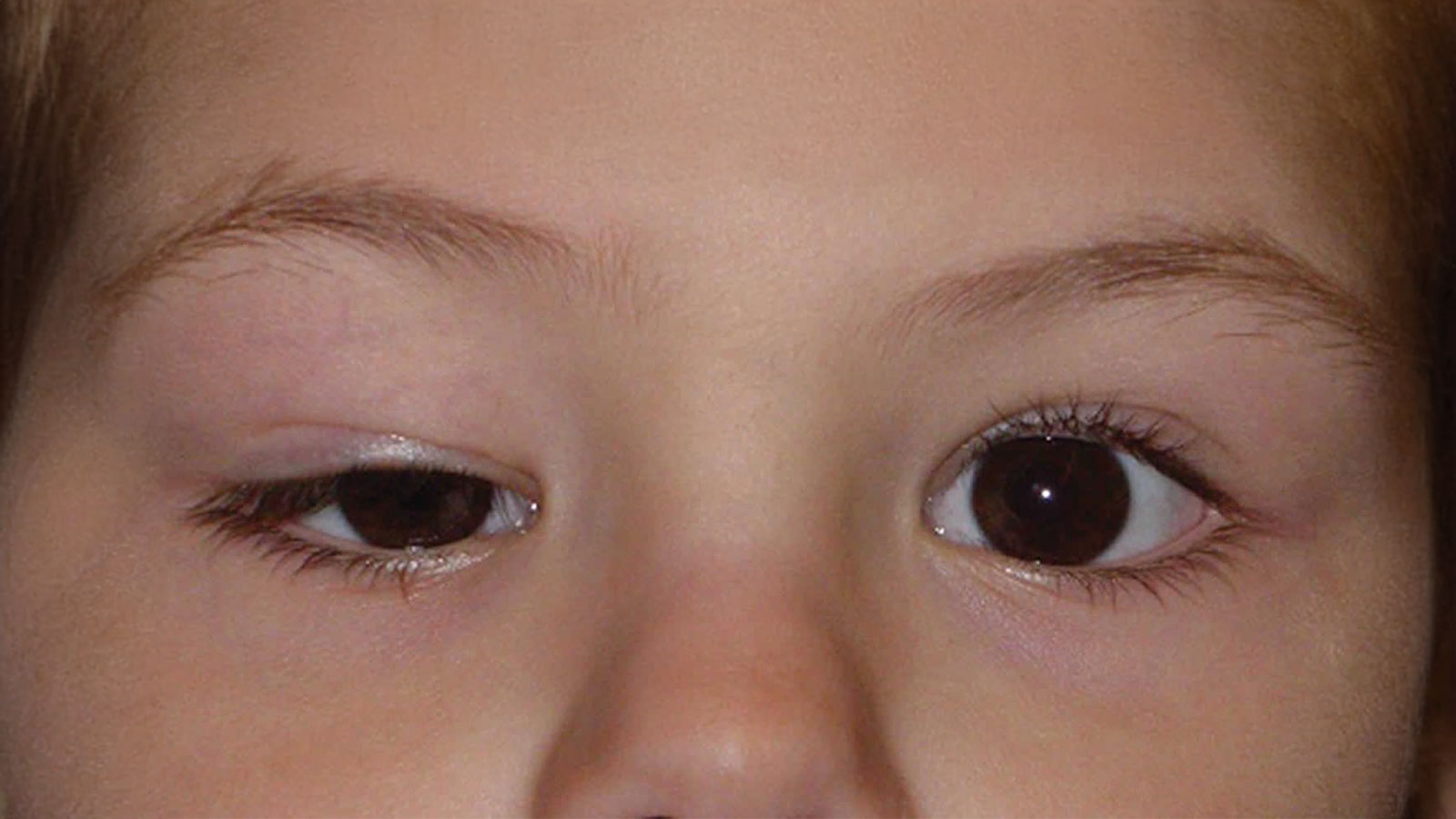Some babies are born with drooping eyelids. While this may seem like a purely cosmetic issue, it can actually have significant effects on visual development. Congenital ptosis, or drooping of the upper eyelid present from birth, is a condition where the upper eyelid lies lower than normal. It can affect one or both eyes and may range from mild to severe.
Early detection is crucial for creating an appropriate treatment plan. In severe cases, the eyelid may cover the pupil and block vision, hindering the child’s visual development.
What Are the Symptoms of Congenital Ptosis?
Congenital ptosis is usually noticeable at birth. A drooping eyelid can make it difficult for infants to establish eye contact and follow visual stimuli, especially in the early months. Common signs include:
-
Drooping of the upper eyelid
-
Inability to fully open the eye
-
Tilting the head backward to see (compensatory head posture)
-
Development of amblyopia (lazy eye)
-
Uneven appearance of the eyes (asymmetry)
In some babies, the drooping eyelid may partially or completely obstruct the visual field. In such cases, early intervention is especially important to support visual development.
What Causes Congenital Ptosis?
Most cases of congenital ptosis are due to developmental issues in the levator palpebrae muscle, which is responsible for lifting the eyelid. However, other underlying causes may also be present:
-
Muscle development defects: The most common cause is weakness or abnormal development of the levator muscle.
-
Neurological causes: Congenital dysfunction of the nerves that control the eyelid muscles.
-
Genetic factors: A family history of ptosis can increase the risk.
-
Syndromic conditions: Congenital ptosis may be associated with certain genetic syndromes (e.g., Horner’s syndrome, Marcus Gunn jaw-winking syndrome).
Although it is often an isolated condition, it should be carefully evaluated as it may indicate an underlying systemic disease.
How Is Congenital Ptosis Diagnosed?
Diagnosis is made by a pediatric ophthalmologist through a detailed eye examination. The evaluation includes:
-
Measuring the degree of eyelid drooping
-
Assessing eye movements and eyelid muscle strength
-
Evaluating visual acuity
-
Checking for amblyopia (lazy eye)
-
Observing head posture and compensatory movements
If necessary, further tests may be requested to rule out underlying neurological or genetic disorders. Early diagnosis is especially important to prevent amblyopia.
What Are the Treatment Options for Congenital Ptosis?
Treatment depends on the severity of the ptosis, how much it affects vision, and the age of the child.
Surgical Intervention:
-
Observation may be sufficient in mild cases.
-
If the drooping eyelid blocks vision, surgery is usually planned after the age of 1.
-
The most common procedures include levator muscle resection or frontalis sling surgery.
-
If there is a high risk of amblyopia, earlier surgical correction may be recommended.
Visual Rehabilitation and Follow-Up:
-
If amblyopia has developed, patching therapy may be needed.
-
Glasses may be prescribed if there are associated refractive errors.
-
Regular follow-up is essential after surgery, as eyelid position may change over time.
What Are the Long-Term Effects of Congenital Ptosis?
With early diagnosis and appropriate treatment, children can achieve normal visual development. However, if treatment is delayed or follow-up is neglected, the following issues may occur:
-
Permanent amblyopia (lazy eye)
-
Cosmetic concerns due to persistent eyelid drooping
-
Abnormal head and neck posture
-
Social and psychological effects
Therefore, congenital ptosis should not be viewed as a purely cosmetic issue. With early diagnosis and proper management, both visual and functional outcomes can be significantly improved.









